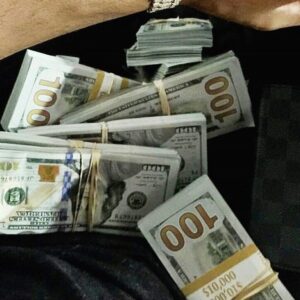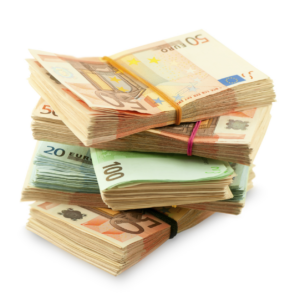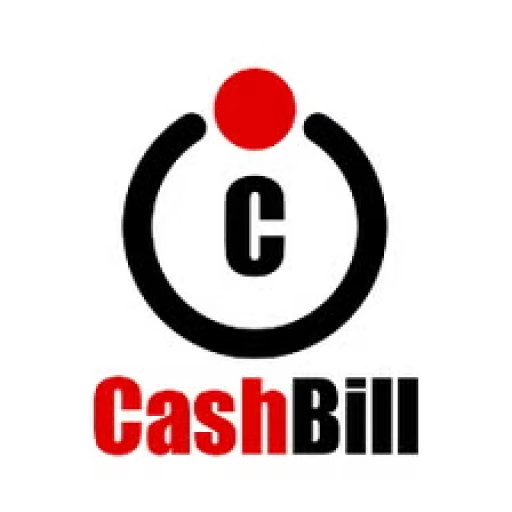Counterfeit Money presents a serious threat. Whether it’s a fake $100 bill passed in a busy store or a forged euro used in a tourist hub, counterfeit money undermines economies, erodes trust, and burdens law-abiding individuals and businesses alike. In this comprehensive blog article, we’ll explore what counterfeit money is, how it’s produced, the risks it poses, how to detect it, and what you should do if you ever encounter it.
What is Counterfeit Money?
Counterfeit money refers to currency that is produced without the legal sanction of the state or government, with the intention to imitate real currency and deceive others. It can be in the form of paper bills, coins, or even digital assets in some cases. The goal of counterfeiters is to make fake money that looks authentic enough to pass off in everyday transactions—costing merchants, banks, and consumers billions annually.
A Brief History of Counterfeiting
Counterfeiting is not a new crime. It has existed since the invention of money itself. Ancient coins were often forged using cheaper metals coated in a thin layer of precious metal. During the Revolutionary War in the United States, British forces flooded the colonies with counterfeit Continental Currency in an attempt to destabilize the American economy—a tactic that proved effective.
In more modern times, the introduction of sophisticated printing technologies has given counterfeiters new tools to create realistic fake money. Despite advancements in anti-counterfeit technology, counterfeit currency still circulates globally.

How Counterfeit Money is Made
Producing counterfeit money has become more high-tech over the years. Here’s how it typically happens:
-
Design Replication: Counterfeiters scan or photograph real currency to replicate its design. They then use software like Photoshop to mimic the intricate details.
-
Printing Process: Professional counterfeiters may use offset printing, laser printing, or inkjet technology. High-end forgeries might be printed on cotton-linen blend paper to imitate the texture of real currency.
-
Finishing Touches: Techniques such as bleaching lower denomination bills and reprinting them as higher denominations are also common. Some may even attempt to imitate watermarks, security threads, and color-shifting inks.
While some fake bills are easy to spot, others—especially “supernotes”—are almost indistinguishable from genuine currency without lab-grade equipment.
The Risks and Impacts of Counterfeit Money
The effects of counterfeit money are wide-reaching:
-
For Businesses: Accepting counterfeit money means a direct financial loss. Businesses cannot exchange fake currency for real money and must absorb the cost.
-
For Consumers: Individuals who unknowingly receive counterfeit bills are often left with worthless paper. Attempting to use it can result in legal trouble if not reported immediately.
-
For Economies: On a macro level, counterfeit money increases inflation, undermines the credibility of the currency, and can hurt investor confidence.
-
For Law Enforcement: Counterfeit operations often fund organized crime, including drug trafficking, terrorism, and human trafficking. This makes counterfeit money not just a financial problem, but a national security issue.
How to Spot Counterfeit Money
Thankfully, most modern currencies come with several built-in security features. Here’s how to detect counterfeit money, particularly in U.S. dollars:
-
Feel the Paper: Genuine U.S. currency is printed on a unique cotton-linen blend, giving it a distinct texture. Counterfeit bills often feel too smooth or too thin.
-
Check the Watermark: Hold the bill up to the light. You should see a faint image of the portrait visible from both sides. Fake bills may lack a watermark or have a poorly printed one.
-
Look for Color-Shifting Ink: On newer bills, the number in the lower right corner should change color when you tilt the bill. This is difficult for counterfeiters to replicate accurately.
-
Inspect the Security Thread: Real bills have a thin embedded strip running vertically, imprinted with the denomination and visible under ultraviolet (UV) light.
-
Use a Counterfeit Detection Pen: These pens contain iodine, which reacts with starch in regular paper. Since real bills don’t contain starch, the pen mark will remain pale or yellow. A dark mark typically indicates a fake.
-
Microprinting and Fine Details: Authentic bills contain extremely small text that’s hard to replicate. Use a magnifying glass to inspect the edges and portrait details.
What to Do If You Find Counterfeit Money
If you suspect a bill is counterfeit, do not return it to the person who gave it to you. Here’s what you should do instead:
-
Do Not Use It: Passing counterfeit money is illegal—even if you didn’t know it was fake when you received it.
-
Note Details: Try to remember where you got the bill and a description of the person who gave it to you.
-
Contact Authorities: Turn the bill over to your local police or the United States Secret Service, which handles currency-related crimes.
-
Notify Your Bank: If you received the bill from an ATM or during a bank transaction, report it to your bank immediately.
Your cooperation helps law enforcement track down counterfeiters and reduce the spread of fake currency.

Preventing Counterfeit Transactions
The best defense against counterfeit money is vigilance. Whether you’re a cashier, a business owner, or just someone making purchases, here are some best practices:
-
Train Employees: If you run a business, educate your staff on how to recognize fake bills.
-
Invest in Technology: Use counterfeit detection machines, especially if you handle large volumes of cash.
-
Stay Informed: Currency designs change over time. Make sure you and your staff are familiar with the latest features.
-
Encourage Electronic Payments: Digital transactions offer more security and are immune to physical counterfeiting.
Conclusion
Counterfeit money may seem like a niche problem, but its consequences are felt worldwide. From minor annoyances to major criminal enterprises, the spread of fake currency undermines financial stability and public trust. With awareness, education, and proactive prevention, individuals and businesses can protect themselves from falling victim to counterfeit schemes.
Whether you’re handling cash daily or just want to stay informed, knowing how to detect and respond to counterfeit money is an essential skill in today’s world. Stay alert, verify suspicious bills, and do your part in fighting financial fraud.
